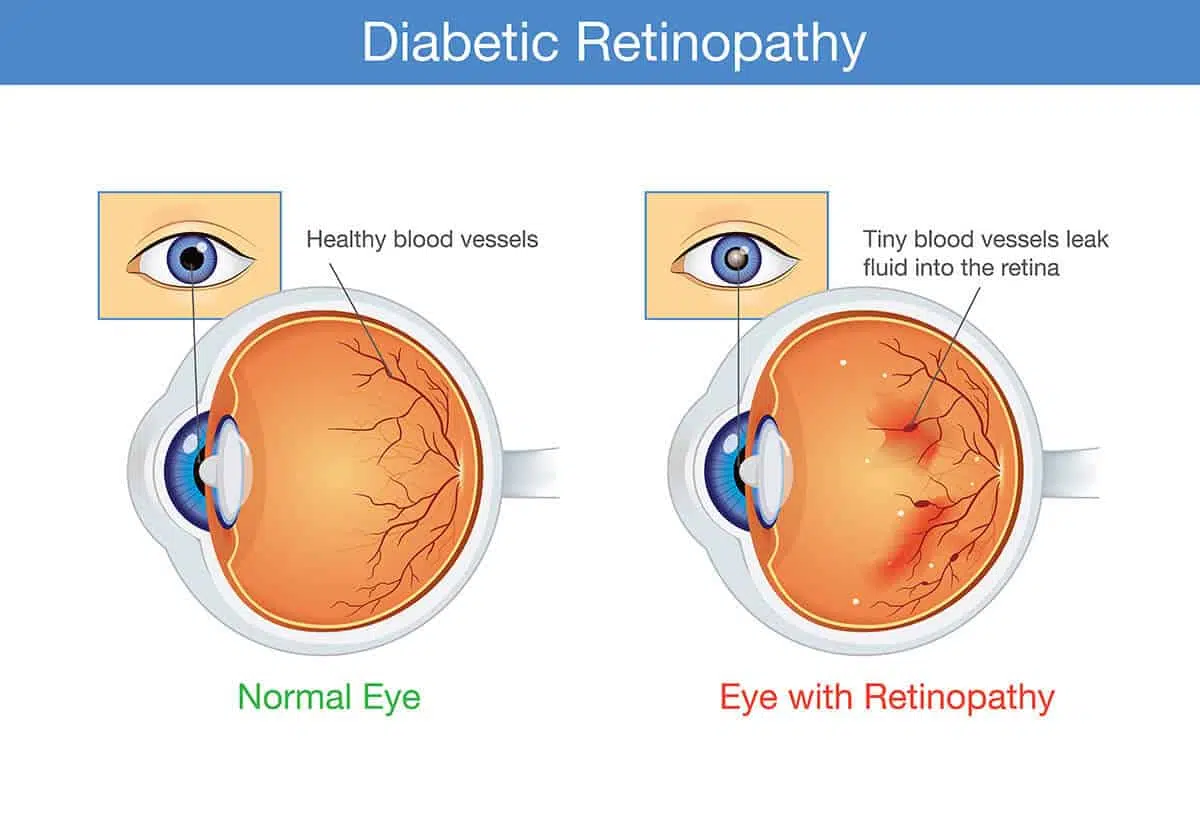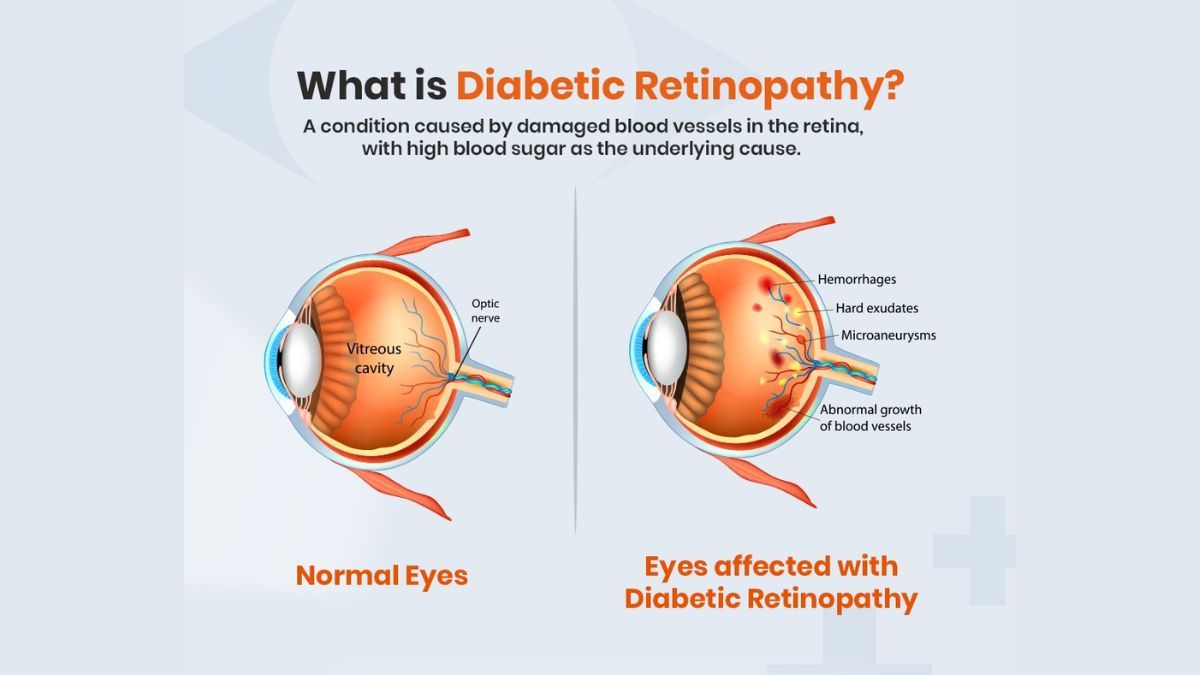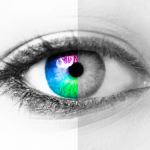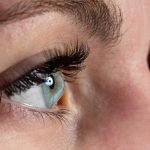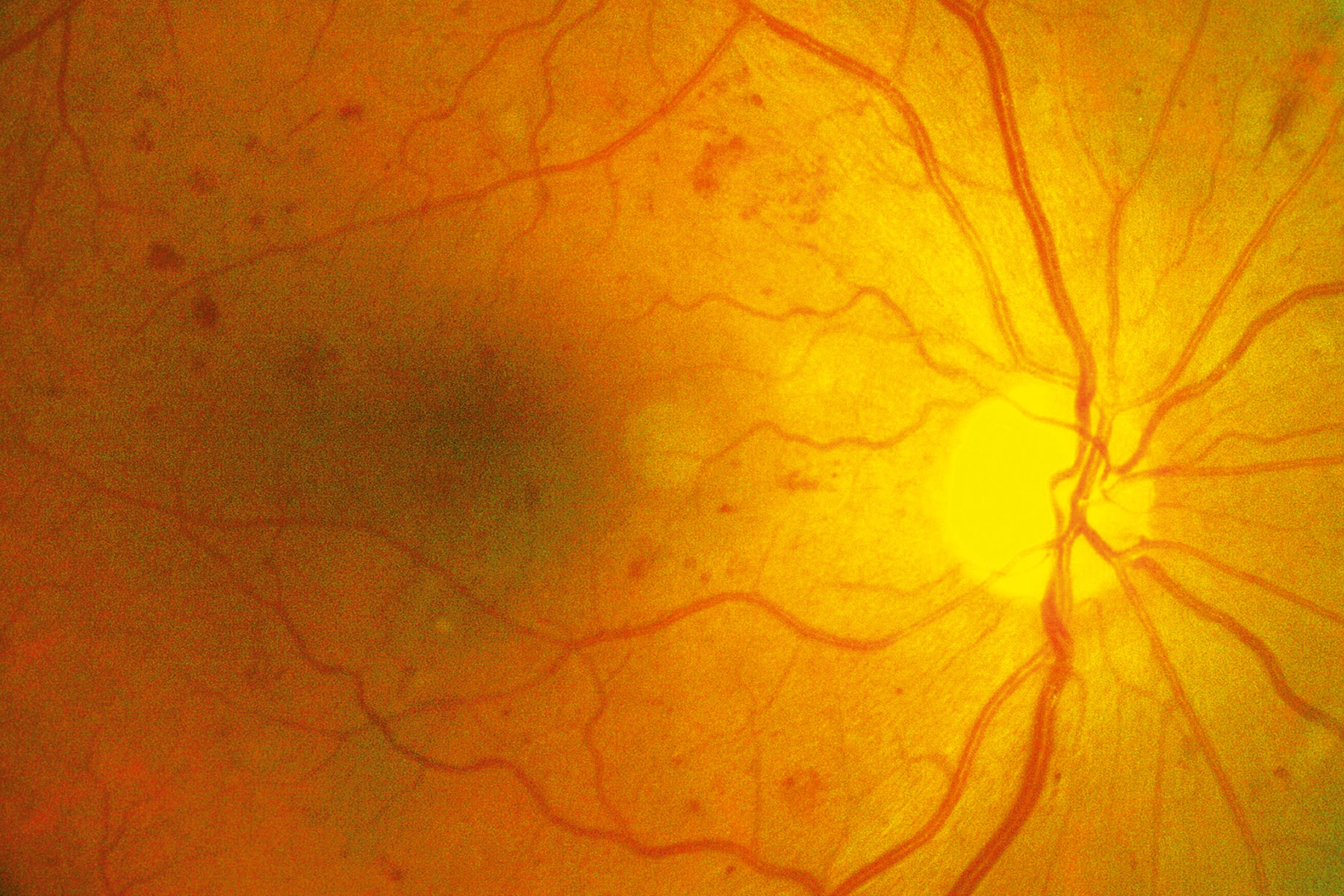
Key facts
- In people with diabetes the retina (the back of your eye) can become damaged.
- Diabetic retinopathy causes serious vision problems.
- If you have diabetes, you can reduce your chances of developing diabetic retinopathy by keeping your blood sugar levels, blood pressure and cholesterol under control.
- If you have diabetes you should have regular eye checks, even if your vision seems normal.
- If you notice any changes to your vision, don’t wait for your routine eye check.
What is diabetic retinopathy?
The retina is a layer of tissue inside the back of your eye. If you have diabetes, the tiny blood vessels in your retina can slowly become damaged. This causes problems with your sight.
What are the symptoms of diabetic retinopathy?
You might not notice any symptoms in the early stages. Therefore, it is important to get your eyes checked regularly by an optometrist if you have diabetes.
If you have diabetic retinopathy, you might:
- find that your vision fluctuates (gets better and worse)
- have blurred or distorted vision
- have patchy vision that can’t be corrected with prescription glasses
- become sensitive to light or glare
- have eye floaters (moving specks) in your vision
- find it more difficult to read, watch television or drive
What causes diabetic retinopathy?
Diabetic retinopathy is a complication of diabetes. Diabetes can cause the tiny blood vessels in the back of your eye to swell and bleed.
This process can slowly damage your retina. Usually, both eyes are affected.
The longer you have diabetes, the more likely it is that you will get diabetic retinopathy.
Your chance of getting diabetic retinopathy also increases if:
- your diabetes and blood sugar levels are not well controlled
- you have high blood pressure
- you have high cholesterol
How is diabetic retinopathy diagnosed?
Diabetic retinopathy is diagnosed by an eye test.
At the eye test the optometrist will examine your eyes. They may use eye drops to help to see the back of your eye. They may take a photo of the back of your eye.
If you have diabetes, you should have your eyes checked when your diabetes is first diagnosed and then at least once every 2 years.
If you experience any changes to your vision, see an optometrist or ophthalmologist as soon as you can.
How is diabetic retinopathy treated?
Treatment for diabetic retinopathy can slow or prevent vision loss. It is best to start treatment as soon as you can.
Keeping your blood sugar and blood pressure under control can help. Eating a healthy diet and getting regular exercise are useful as part of managing your diabetes.
Other treatments include:
- laser treatment to seal leaking blood vessels and stop the growth of abnormal blood vessels
- surgery, such as vitrectomy
- medicines that can reduce swelling in the retina
Can diabetic retinopathy be prevented?
You can reduce your chance of getting of diabetic retinopathy by :
- keeping your blood glucose levels, blood pressure and cholesterol levels in a healthy range
- not smoking
- having regular eye checks with your optometrist so that any early changes can be found and treated
